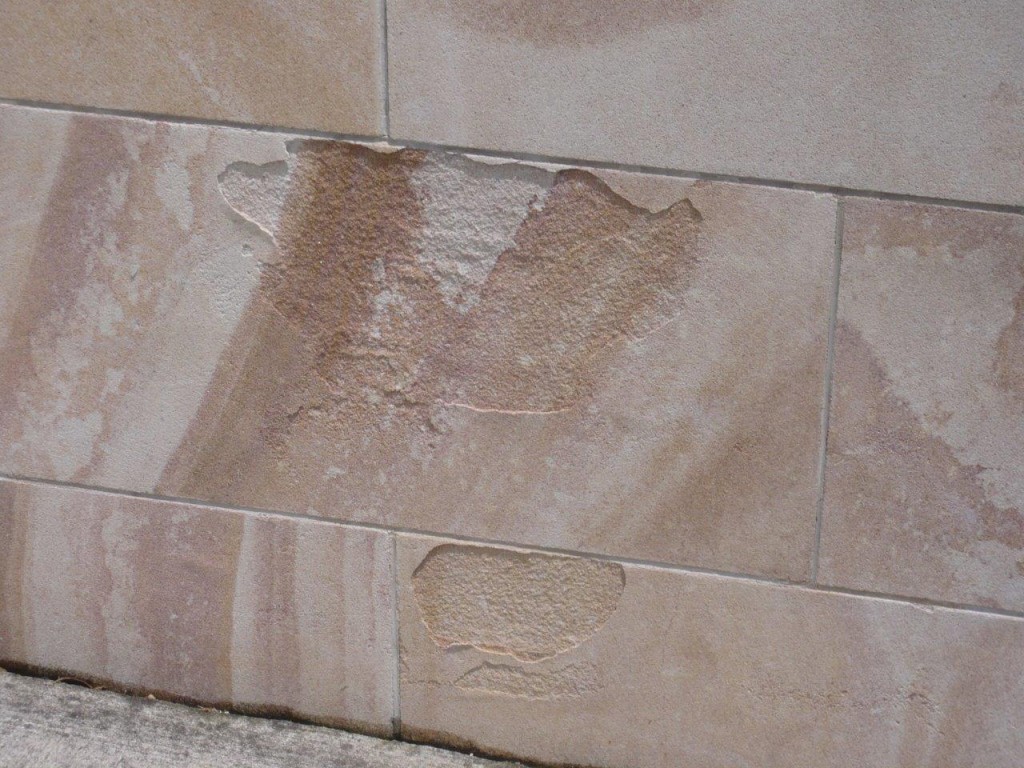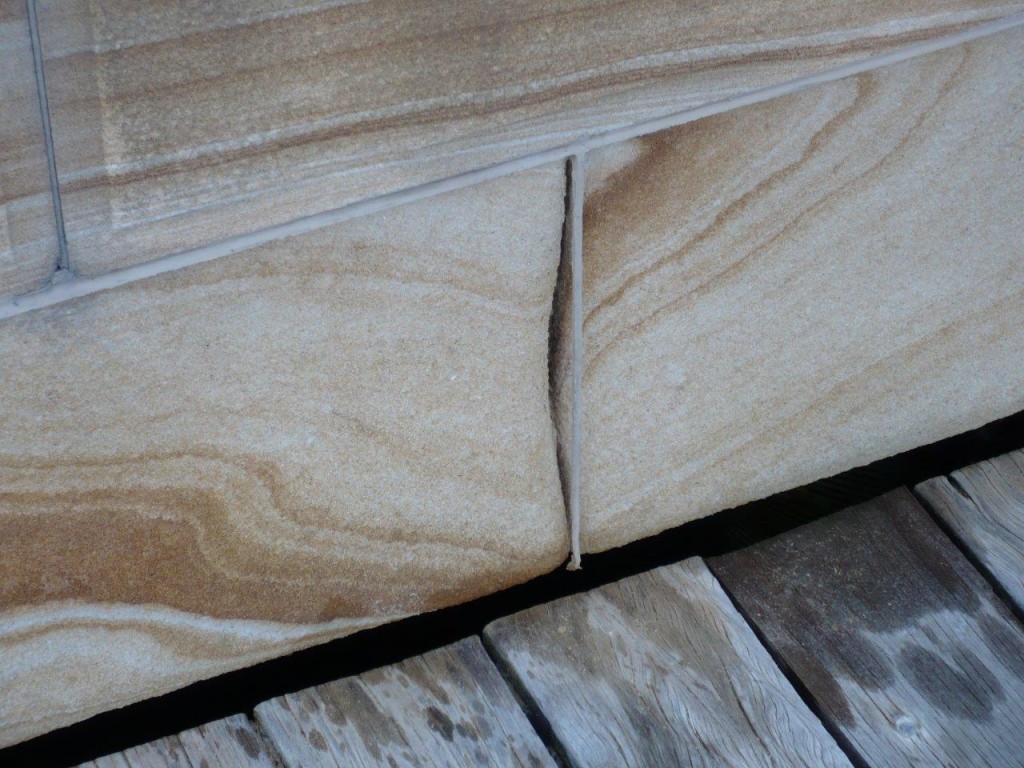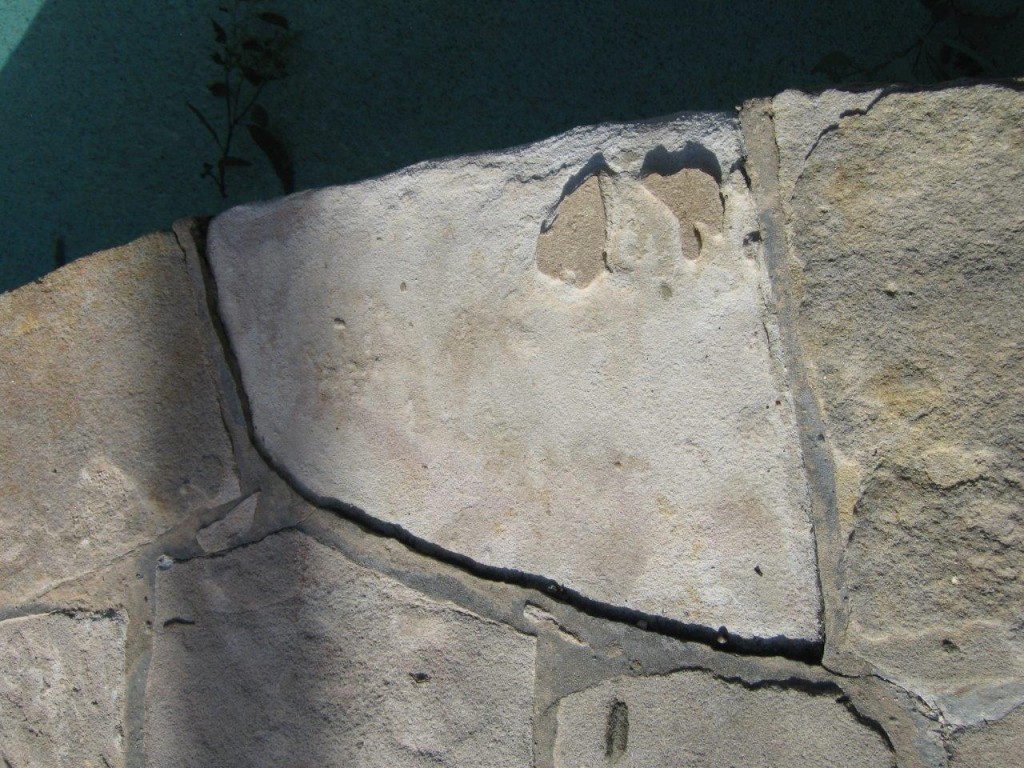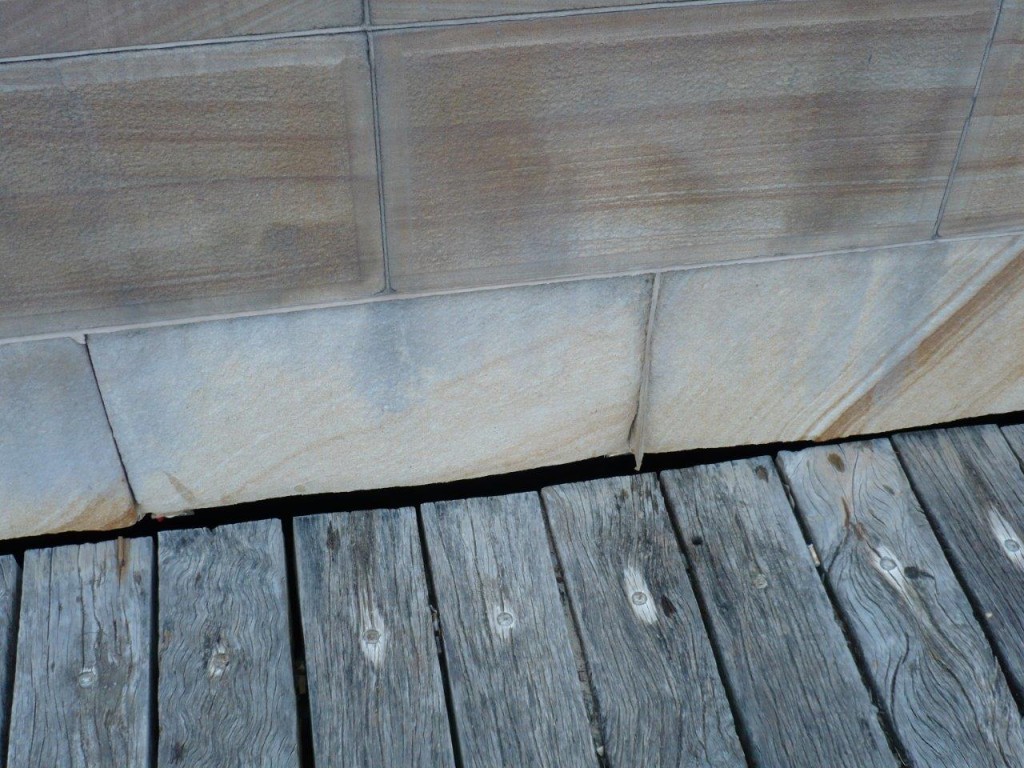Spalling is when your stone starts to flake or peel away
Spalling is most common in softer stones such as sandstone, limestone, and slate surfaces, and is generally caused by salt ingress.
When salt crystals enter into stone (generally carried by water) they stay in the stone when the water evaporates away. Over time more salt crystals build up and they expand and contract as they go through the wet / dry cycle. This creates a fracture in the stone which can start to physically spall the stone.
The salts can come from many places, but the most often source is the sea or salt water pools.
If you notice any spalling around your home or business it is important that it is fixed as soon as possible. Slique can flush out salts in the stone and apply special consolidating sealers to physically harden the stone making it much less likely to spall in the future, even if there are new salts exposed to the stone. It is important that we can complete this process as soon as possible however as spalling damage can be very severe and the worse condition the stone is in the harder it is to fix.
For new builds if you are considering a softer stone the option exists to seal all six sides of the tile with the consolidating sealer before the stone is laid. This is the best way to protect from salt damage, as treatments completed after laying are always at risk of salt penetrating through cracks in grout or silicon joints which can then continue to create spalling.
Spalling can also affect grout lines and joints which allows moisture to enter behind the tile Spalling can also occur on other porous surfaces – for example, concrete spalling is quite common Spalling can appear as flaking, peeling, pocking, or recessing of the surface



